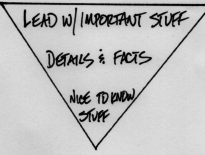Over the past two weeks I’ve seen a flurry of content related to donor retention. Is February the time of year when retaining your donors matters most?
Claire Axelrad, Roger Craver, Jeff Brooks and a whole host of other thought leaders drafted, edited and published content relating to donor retention. I wasn’t immune to this either. Here at Fundraising Report Card® we released a 2500 word guide and cheat sheet on donor and donation retention as well.
‘Tis the season?
What caused this spike in retention related content? It turns out that February isn’t “Donor Retention Month,” instead the increase in content was a result of more people sharing the somewhat recently published Fundraising Effectiveness Project’s 2016 report. This year’s FEP Donor Retention Supplement showed that donor retention slipped to 46.09% — a rather small drop from the previous year’s 46.63% donor retention rate, but a rather steep decline from 2009’s 50% mark.
The increase in content about “how to retain donors” and “why retention matters now more than ever,” made sense. I can only imagine that as donor renewal rates trend lower and lower, development staff are feeling more and more pressure to maintain and increase their own organization’s rates.
Yet, I have a hypothesis with a bit of a dim outlook to share: Retention rates will continue to decline. Not for lack of engagement, or “storytelling,” or saying “thank you,” but rather because more young people are becoming philanthropic.
My hunch is that millennials are ruining your donor retention and there isn’t much you can do a about it.
Get Data-Driven Email Updates
Millennials are charitable but they don’t stick around
I’ve written about this in the past. Millennials have an unbelievably short attention span. I should know, I am one (I’ve checked Twitter, Snapchat and Facebook 16 times while writing this blog post, as a for instance). Our general inability to concentrate has serious implications on our relationships, work and even charitable giving.
It’s important to note that millennials are the largest living generation, totaling over 80 million in the United States alone. There are a lot of people like me out there. We tend to be glued to our phones, obsessed with our Instagram likes and more concerned with the number of followers we have than pretty much everything else (sorry Mom, I’d love to make you dinner, but first let me take a selfie).
There are serious societal implications that stem from our behavior. Don’t take my word for it, there are plenty of others who are much more qualified that are attempting to shed light on this.
Yet, no matter our behavioral imperfections, we do tend to donate (#redemption). A 2014 report titled, The Millennial Impact Report, found that 87% of millennials donated in 2014. 91% of millennial women made charitable contributions as did 84% of millennial men.
That’s astounding! Yet also troubling…
As more of my peers (especially the younger and less affluent ones) become fiscally philanthropic they run the risk of diluting the metrics and statistics our industry uses to measure growth and performance.
Remember, at its core, retention rate measures how well you’re handling donor relationships . Of course this is something every organization can get better at, but when dealing with millennials you’re going to need some good fortune.
Most millennials simply don’t care enough to develop a relationship with your organization, at least not right now. We have a hard enough time maintaining relationships with our peers, let alone a nonprofit.
My generation is less brand-loyal than Generation X’ers. We simply are a tough group of people to engage with and build relationships.
So let’s circle back to the FEP Retention report. Remember, the recent chaos surrounding donor retention rates stemmed from the report’s finding of a continued decline in overall donor retention rates. But I wonder what the report would show if it were segmented by generation? Are baby boomers being retained at 46%? I sure hope not.
Unfortunately more granular industry metrics like these do not exist (this is something we are working on producing here at Fundraising Report Card®, though). And ultimately this void of information leads to the response we saw over the past few weeks.
Big, generalized metrics can be informative (and indeed they are, especially in the case of the FEP report, or the Blackbaud Institute’s Charitable Giving Report, and even our own Fundraising Report Card® Live Benchmarks — they all contain a lot of amazing material), but they can also be mystifying. The response we’ve seen from thought leaders, fundraisers and nonprofit professionals throughout the industry is well intentioned but potentially misguided.
My argument that millennial retention is the root cause of lower industry retention rates is based solely on “gut feel.” Which is ironic because this blog frequently (if not exclusively) proposes data driven analysis and decision making. But until our industry creates segmented benchmarks it will be hard to know for sure what is causing the general decline in retention rates. This is simply my “two cents.”
That being said, there is one way to gather more clarity after the release of the FEP’s report — benchmark your organization’s retention rates against yourself.
One of the most effective ways to measure your organization’s retention performance is to compare current donor and donation retention rates to historical rates. Industry averages might be at 46%, down from 50% in 2009, but what about your nonprofit? Are you up 4% since in 2009? If so, give yourself a pat on the back.
I hope I am wrong. I hope donor retention rates increase next year, and the year after that. Unfortunately I don’t see it happening.





Zach this suggest nonprofits do not have control, that is simply illogical. In fact read 113 million markets of one. It turns out our reliance on traditional demographics like age may not be accurate for the business of raising money. The story isn’t that there was a small drop in retention the big story is with all the advice from experts zero impact has been made in over a decade. There is a much much bigger story here about thought leadership on this topic. Best practices are done. It just could be that a new model needs to emerge in order to have success to today’s donors.
Thanks for taking the time to read this post and share your thoughts! While I think there is some validity to what you are suggesting, I also do think there is value in the best practices that thought leaders share. This blog post is not an attempt to discredit those individuals but rather shed light (similar to what you are suggesting) on the changing dynamics of fundraising. Of course there are a lot of philanthropic Gen Xers, Baby Boomers, etc. so we do not need an entire paradigm shift, but we should at least begin having the conversation.
Zach, thanks for enlightening the reader on trends in donor retention rates and the impact millennials can have on retention rates assuming we are tracking this in a thoughtful way.
Thanks so much for reading and commenting, Solomon.
As a millenial who donates and dabbles in fundraising in my catch-all role at a non-profit, my gut feeling is that if non-profits want to retain millenial donors we need to focus more on our programmatic impact and less on traditional stewardship. Millenials are not brand loyal, and have access to infinite information. We read reviews before we make purchases. In my opinion, low millenial donor retention seems like an opportunity for organizations to focus on aligning work with mission and make more of an impact. Of course communicating the impact is key, but it has to be creative on an organizational level to engage the segment of millenials you want to target. Just my two cents.
Emma, thanks so much for taking the time to read and share your thoughts. I couldn’t agree more. This line stood out to me, low millennial donor retention seems like an opportunity for organizations to focus on aligning work with mission and make more of an impact.
I think you are 100% right. The more an organization connects with our peers on an “impact” or “mission” level the more likely they are to forge a lasting relationship with that person.
Very provocative Zach. I applaud your efforts to get more granular with the data. At the same time, it’s problematic for most organizations to track donor retention by demographic because they simply don’t have this information in their database.
I tend to agree with Emma. In fact, I read everything you’ve written as a sign that efforts must be redoubled to renew first-time donors (many of whom may be Millennials, #hooray). I would argue that aligning work with mission/impact, and reporting back to donors on same, is at the heart of effective communications with all donors.
CAVEAT: Within every demographic there are folks who do want to have a “relationship” with your nonprofit and those who don’t. The key to retention is getting to know your donors well enough to know who’s who. Notice their areas of interest, and input this into your database. Ask them about their communication preferences. Then, for those who are on the “transformation” path (vs. the “transaction” path), it’s imperative to engage in meaningful, donor-centered relationship-building experiences and communications.
Organizations who want to retain donors need to have a plan. And they need to prioritize and work that plan. It’s the only way to building loyalty over time.
And that’s my “two cents.”
Claire, thank you so much for taking the time to share your thoughts! I found myself nodding my head in agreement as I read your comment.
I agree entirely that getting too granular within an individual organization’s database can do more harm then good. As a whole though, there is some level of responsibility for someone (or some group) in our sector to create highly granular benchmarks so that all organizations can be well informed. I think the conversation about falling retention rates would have a different tone if that was the case.
You and Emma are both 100% right though. As I wrote above, “retention rate measures how well you’re handling donor relationships,” and the suggestions you both put forward (align with mission/impact, track communication preference, engage in meaningful/donor-centered ways) are key ways to improve upon that.
I simply wonder if the tactics of the past will work as well with younger donors, or if that is what is already having an impact on current industry benchmarks.
Regardless, you are right. You need a plan. You need to buy into that plan. And you need to execute on it.
Thanks again for sharing your perspective, Claire!